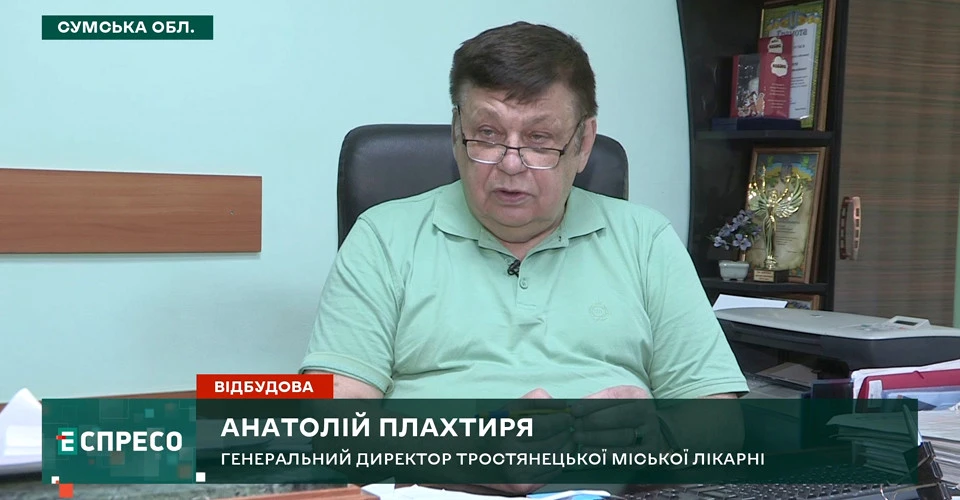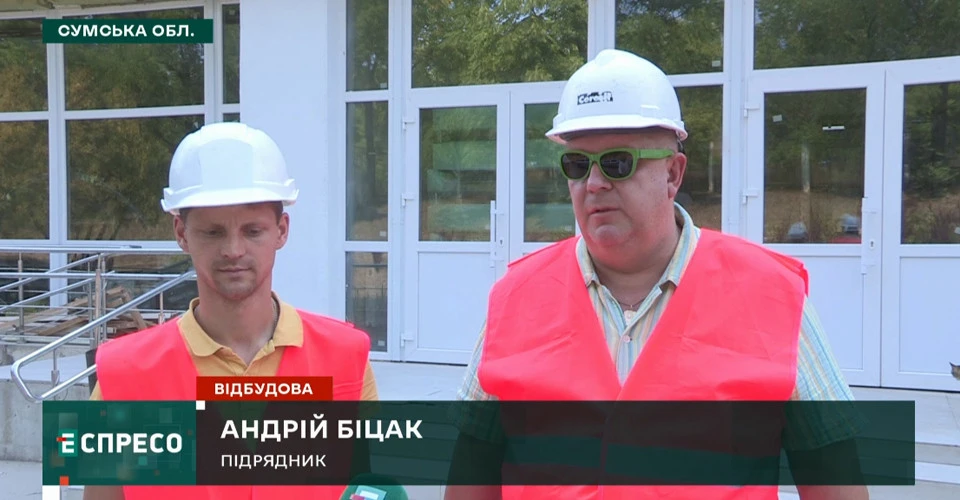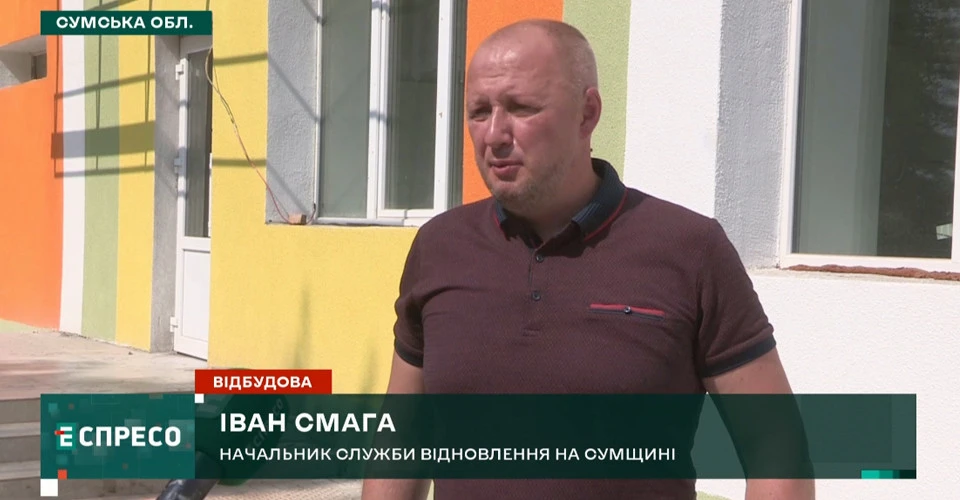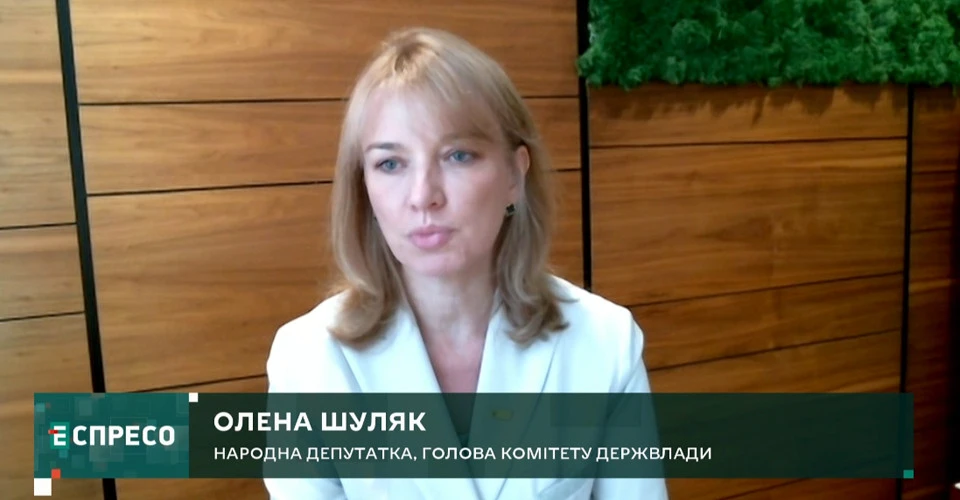
Rebuilding Ukraine: Sumy region's recovery from Russian occupation
Even after being liberated from Russian occupation, Ukraine's Sumy region still faces daily shelling from enemy forces
The special issue of the Urban Reconstruction and Development Program on Espreso reports.
At the beginning of the full-scale invasion, an enemy tank heavily shelled the Trostianets City Hospital. According to the hospital's director, Anatolii Plakhtyria, the attack damaged the infectious diseases department, the oxygen station, and an outbuilding. The maternity ward was also struck, the operating room was destroyed in a fire, and the outpatient clinic was damaged. Overall, about 30% of the hospital was impacted.
The Trostianets hospital serves not only local residents but also those from neighboring areas, treating up to 500 patients a day. Even during the temporary occupation, the facility continued to accept patients.
"We delivered eight babies in the basement. We assisted nine mothers in childbirth. Later, our staff wheeled these mothers and their babies through the checkpoints around Trostianets,” Plakhtyria shared with Espreso.

Restoring the hospital has become a top priority for the city, with repair costs estimated at over UAH 90 million. The Sumy Region Recovery Service, is leading the effort to get the hospital back in shape and has promised some useful improvements.
According to Ivan Smaha, head of the Service, the restoration will include installing wheelchair lifts for people with limited mobility and implementing energy-saving measures, such as insulating attics, basements, and facades.
As of now, the repair work is about 90-95% complete, contractor Andrii Bitsak told reporters. The team is currentlyworking on the porches, while the main insulation tasks have already been finished.

The hospital isn’t the only facility the Sumy Region Recovery Service is working on.
“This includes restoring the railway station, two five-story residential buildings, the city hospital, and the main road between Sumy and Poltava,” said Smaha.

The train station in Trostianets suffered about 50-60% damage. The invaders used it as a firing position and hid ammunition there, drawing fire from Ukrainian defenders.
The bus station and nearby pharmacies and eateries will also be rebuilt.
The Trostianets City Council notes that the destruction has set the city’s development back by about 10 years, but restoration efforts are ongoing. The hospital and some residential buildings are expected to be finished by the end of the year.
Ivan Smaha, head of the Sumy Region Recovery Service, shared updates on the repair progress in the Sumy region.
Challenges in restoring the Sumy region
“There are frequent alarms in the area, and the enemy constantly launches missile and drone strikes. We also face a shortage of specialists. However, Ukrainians are resilient, and we strive to complete the work on time,” said Ivan Smaha.
Roads and bridges in region
According to the head of the Sumy Region Recovery Service, road repairs and maintenance are being done carefully due to limited resources. The agency repairs roads as best it can based on available funding.
Challenges for owners of damaged houses
“We have a unique situation here. Many border towns are regularly shelled by Russia, leading a significant portion of the population to move inland,” Ivan Smaha explained. The main issue for internally displaced persons is finding temporary shelter while their homes are being repaired.
Olena Shuliak, MP and Chair of the Committee on Organization of State Power, Local Self-Government, Regional Development and Urban Planning, discussed the reconstruction efforts in Ukraine on Espreso.

She noted that the World Bank and the Ministry of Reconstruction have assessed the damage from Russia's full-scale invasion three times. The latest assessment was in February 2023, estimating Ukraine's reconstruction needs at least $486 billion, while direct losses exceeded $150 billion. Most of these losses are in the housing sector, transportation, and energy infrastructure. However, these figures don't include the destruction caused by Russia's massive attacks in 2024, the MP emphasized.
“If we look at the reconstruction efforts, there are three levels: local, regional, and central. Local authorities can manage some damaged facilities and use local budget funds for restoration. For facilities that communities can’t handle, the regional military administration steps in,” said Olena Shuliak.
“For more complex projects, the Ministry of Reconstruction gets involved. A recent example is the destruction of the Kakhovka hydroelectric power station, which required the quick construction of a new water supply system to ensure drinking water for over 1 million people,” she added.
According to her, the ministry is securing loans from major banks, like the European Investment Bank, and seeking grant funds for restoration. They are also establishing connections with sister cities, foreign governments, and philanthropists at the local level.
“For example, more than UAH 12 billion was raised through the UNITED24 platform in 2023. One of the successful projects is the construction of 18 houses in the Kyiv region, funded by donors. The entire process of restoring these homes is overseen by international organizations,” said the MP.
She also mentioned that the Ministry of Reconstruction has launched a large-scale state program called eRestoration to rebuild housing.
“As of today, over 65,000 Ukrainian families have benefited from this program. The maximum compensation for damage to an apartment is UAH 350,000, and for a private house, it’s up to UAH 500,000,” said Olena Shuliak.
According to her, more than 8,000 families have already received housing certificates through this program, and over 3,000 families have used these certificates to secure new homes.
Olena Shuliak reminded everyone that to support the eRestoration program, a Fund for the Elimination of Consequences of Russia’s Armed Aggression was created, using funds from seized Russian assets in Ukraine. The first UAH 17 billion came from Sberbank.
The politician also noted that the eRestoration program is set to expand to include residents of temporarily occupied territories who live in Ukraine as internally displaced persons or have become refugees abroad.
Commenting on the situation in the reconstruction sector, the MP noted that mobilization has led to a shortage of qualified workers.
“Of course, mobilization has impacted the construction industry. Many workers are now on the front lines defending Ukraine. There are challenges, but we recognize that our country's defense is the priority,” said Olena Shuliak.
She emphasized the need for clear government guidelines on how to reserve employees in the construction and energy sectors. This is crucial because having qualified personnel available speeds up the restoration of energy facilities damaged by Russian attacks.
“Along with mobilization, there should be fair booking for essential workers,” the politician stressed.
Shuliak also mentioned that over 90% of the construction materials used for rebuilding in Ukraine are made domestically. The establishment of new manufacturing facilities in this sector could create hundreds of thousands of jobs and boost the economy.
She pointed out that before the full-scale invasion, Ukraine didn’t have any glass production plants, which are essential for building construction.
“Ukraine should create an environment that encourages investors to establish glass production facilities here. Producing glass locally is always cheaper than importing it,” Shuliak stated.
- News











































